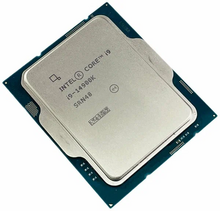 Logo since 2023 | |
| General information | |
|---|---|
| Launched | January 2006 |
| Marketed by | Intel |
| Designed by | Intel |
| Common manufacturers |
|
| Performance | |
| Max. CPU clock rate | 400 MHz to 6.2 GHz |
| Cache | |
| L1 cache | Up to 112 KB per P-core 96 KB per E-core or LP E-core |
| L2 cache | Core and Core 2: Up to 12 MB Nehalem-present: Up to 2 MB per P-core and up to 3 MB per E-core cluster |
| L3 cache | Up to 36 MB |
| Architecture and classification | |
| Technology node | 65 nm to Intel 4 and TSMC N5 |
| Microarchitecture | |
| Instruction set | x86-64 |
| Instructions | MMX, SSE, SSE2, SSE3, SSSE3, SSE4.1, SSE4.2, AVX, AVX2, AVX-512, TSX, AES-NI, FMA3, AVX-VNNI |
| Extensions |
|
| Physical specifications | |
| Cores |
|
| GPU | Intel Graphics Technology |
| Sockets | |
| Products, models, variants | |
| Brand names |
|
| Variant |
|
| History | |
| Predecessor | Pentium |

Intel Core is a line of multi-core (with the exception of Core Solo and Core 2 Solo) central processing units (CPUs) for midrange, embedded, workstation, high-end and enthusiast computer markets marketed by Intel Corporation. These processors displaced the existing mid- to high-end Pentium processors at the time of their introduction, moving the Pentium to the entry level. Identical or more capable versions of Core processors are also sold as Xeon processors for the server and workstation markets.
Core was launched in January 2006 as a mobile-only series, consisting of single- and dual-core models. It was then succeeded later in July by the Core 2 series, which included both desktop and mobile processors with up to four cores, and introduced 64-bit support.
Since 2008, Intel began introducing the Core i3, Core i5, Core i7 and Core i9 lineup of processors, succeeding Core 2.
A new naming scheme debuted in 2023, consisting of Core 3, Core 5, and Core 7 for mainstream processors, and Core Ultra 5, Core Ultra 7, and Core Ultra 9 for "premium" high-end processors.